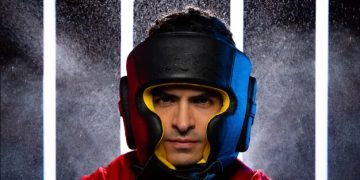Youth Sports Specialization: Is It Hurting Young Athletes?

Youth sports specialization involves intensive, year-round training in a single sport, potentially leading to increased injury risk, burnout, and psychological stress in young athletes. It’s crucial to understand both the benefits and drawbacks of this approach.
The pressure to excel in youth sports is higher than ever. More and more young athletes are focusing on a single sport year-round, a practice known as youth sports specialization. But is this intense dedication helping or hurting them?
This article explores the potential risks and rewards of specializing in a single sport early in life. We’ll delve into the impact on physical health, mental well-being, and long-term athletic development. Is youth sports specialization the key to success, or is it setting young athletes up for burnout and injury?
Understanding Youth Sports Specialization: What Is It?
Youth sports specialization is defined as intensive training in a single sport on a year-round basis, often excluding participation in other sports. This approach has gained traction as parents and coaches seek to maximize a young athlete’s potential in a particular discipline. However, the trend raises important questions about the long-term effects on young bodies and minds. Is this early focus beneficial, or does it lead to unforeseen consequences?
The Rise of Specialization in Youth Athletics
Several factors have contributed to the rise of sports specialization. The increased competitiveness in college athletics, the lure of professional careers, and the desire to secure scholarships all play a role. But is the pursuit of these goals worth the potential sacrifices?
- Early Exposure: Many children are introduced to organized sports at younger ages than ever before.
- Increased Pressure: The pressure to perform and excel can lead to early specialization.
- Parental Involvement: Parents often play a significant role in guiding their children towards a particular sport.

The drive to achieve athletic success can be powerful, but it’s crucial to consider the potential impact of youth sports specialization on the overall well-being of young athletes.
The Potential Benefits of Early Specialization
While concerns exist, youth sports specialization can offer certain advantages. Focused training can lead to accelerated skill development and increased competitiveness in a chosen sport. Let’s explore the potential positives.
Enhanced Skill Development
When young athletes dedicate themselves to a single sport, they often experience rapid improvements in their skills. The focused practice allows them to master techniques and develop a deeper understanding of the game.
Increased Competitiveness
Specialized training can give young athletes a competitive edge. By honing their skills and knowledge in one area, they may be better prepared to compete at higher levels.
- Focused Training: Allows for in-depth skill development.
- Competitive Advantage: May lead to success in competitions.
- Potential Scholarships: Could increase chances of athletic scholarships.
However, it’s important to weigh these potential benefits against the potential risks associated with intense, early sports specialization. Consider the overall picture of the young athlete’s life.
The Risks and Drawbacks of Youth Sports Specialization: Is It Hurting Young Athletes?
Despite the potential advantages, there are significant concerns about the risks of youth sports specialization. Overuse injuries, burnout, and psychological stress are just a few of the potential drawbacks. The question remains: Is it hurting young athletes?
Increased Risk of Injury
One of the most significant concerns is the increased risk of overuse injuries. Repetitive motions without adequate rest can lead to stress fractures, tendonitis, and other musculoskeletal problems.
Burnout and Psychological Stress
Intense training schedules and the pressure to perform can lead to burnout, anxiety, and depression. Young athletes may lose their love of the sport and experience decreased motivation.
- Overuse Injuries: Repetitive motions can cause physical damage.
- Burnout: Can lead to decreased motivation and enjoyment.
- Psychological Stress: Pressure to perform can impact mental health.

The emotional and physical toll of youth sports specialization can be significant, particularly if the athlete is not properly supported and monitored. Recognizing the signs of burnout and injury is crucial.
Alternatives to Early Sports Specialization: A Balanced Approach
Given the potential risks, it’s important to consider alternative approaches to youth sports development. A balanced approach that emphasizes multi-sport participation, proper rest, and age-appropriate training can be more beneficial in the long run. Exploring the options is essential for the athlete’s development.
The Benefits of Multi-Sport Participation
Participating in multiple sports can promote well-rounded athletic development, reduce the risk of overuse injuries, and prevent burnout. Cross-training can also improve overall fitness and coordination.
Age-Appropriate Training and Rest
Ensuring young athletes receive age-appropriate training and adequate rest is crucial for their physical and mental well-being. Overloading them with intense training at a young age can be detrimental. It is important to consider the athlete’s age when it comes to training.
- Reduced Injury Risk: Multi-sport participation can prevent overuse injuries.
- Well-Rounded Development: Enhances overall fitness and coordination.
- Increased Enjoyment: Prevents burnout and promotes a love of sports.
A well-rounded approach to youth sports emphasizes enjoyment, skill development across various activities, and a focus on long-term athletic potential, allowing kids to explore different potentials.
Strategies for Parents and Coaches: Supporting Young Athletes
Parents and coaches play a critical role in ensuring young athletes have a positive and healthy sporting experience. Open communication, realistic expectations, and a focus on overall well-being are essential.
Open Communication and Realistic Expectations
Encouraging open communication between athletes, parents, and coaches can help address concerns and prevent problems. Setting realistic expectations and celebrating effort, not just outcomes, can reduce pressure and promote enjoyment.
Focus on Overall Well-being
Prioritizing the athlete’s physical and mental health is paramount. Ensuring adequate rest, proper nutrition, and a supportive environment can help them thrive both on and off the field. Overall well-being is the most important thing to consider.
- Encourage Open Dialogue: Facilitate communication between athletes, parents, and coaches.
- Promote a Positive Environment: Focus on effort and improvement, not just winning.
- Prioritize Athlete Health: Ensure proper rest, nutrition, and mental well-being.
By adopting these strategies, parents and coaches can create a supportive and nurturing environment that allows young athletes to reach their full potential without sacrificing their health and happiness. This is crucial for their success.
The Long-Term Impact of Youth Sports Specialization: Looking Ahead
The choices we make about youth sports today have long-term consequences. Understanding the potential impact of youth sports specialization on future athletic development, health, and life satisfaction is crucial for making informed decisions. How do we best prepare our children for success and a fulfilled life through sports?
Balancing Specialization and Overall Well-being
Finding the right balance between focused training and overall well-being is essential. Encouraging participation in multiple activities, prioritizing rest and recovery, and fostering a love of sports can help young athletes thrive in the long run. It’s more important to have a happy and healthy life than a life dedicated to sports.
Creating a Positive Sports Culture
By shifting the focus from winning at all costs to developing well-rounded individuals, we can create a more positive and sustainable sports culture for young athletes. Ultimately, the goal is to help them develop a lifelong love of physical activity and a commitment to healthy living.
| Key Point | Brief Description |
|---|---|
| 🤕 Injury Risk | Specialization increases the risk of overuse injuries. |
| 🧠 Burnout | Young athletes may experience burnout due to intense training. |
| ⚽ Multi-Sport | Participating in multiple sports can prevent injuries. |
| ❤️ Well-being | Prioritizing overall well-being is crucial. |
Frequently Asked Questions
Youth sports specialization involves year-round intensive training in a single sport. The concern is that it can lead to overuse injuries, burnout, and psychological stress in young athletes due to repetitive strain and pressure.
Early specialization can lead to enhanced skill development and increased competitiveness in a specific sport. Focused training allows for rapid improvement and a deeper understanding of the game, potentially leading to scholarships.
Encourage multi-sport participation to prevent repetitive strain. Ensure proper rest and recovery periods, and implement age-appropriate training programs that avoid overloading young bodies. Prioritize a balanced athletic experience.
Signs of burnout include decreased motivation, loss of enjoyment in the sport, fatigue, irritability, and increased anxiety. Communicate with your child and prioritize their mental health alongside their physical training.
A balanced approach involves multi-sport participation, age-appropriate training, adequate rest, and open communication. Prioritize the athlete’s overall well-being and long-term development over short-term competitive success, and focus on their enjoyment of the sport.
Conclusion
Ultimately, the decision of whether or not to specialize in a sport is a personal one. Understanding the potential risks and rewards of youth sports specialization is crucial. A balanced approach that prioritizes the athlete’s overall well-being and long-term development is generally the most beneficial.





